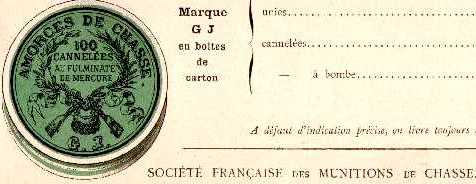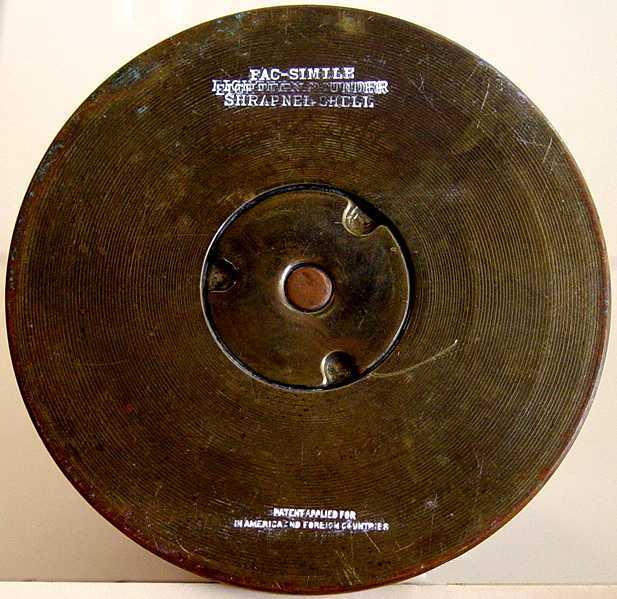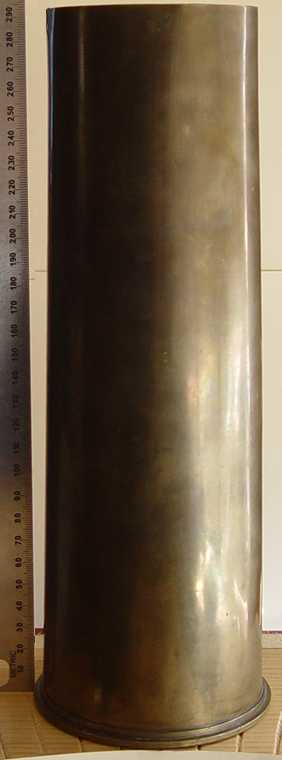|
THE CARTRIDGE COLLECTOR'S EXCHANGE |
| Contents
Cartridge
Lists
Prior Picture Pages:
Links to Other Sites
Cartridge Collectors Organizations:
Auctions:
Books:
Other Collector's Sites: |
Home of the Old Ammo Guy's Virtual
Cartridge Trading Table Featuring a wide range of antique, obsolete, and modern ammunition for collectors Picture Page December 2007 A box of headstamped French percussion caps.....
Here's a rather nice French paper percussion cap box, which surprisingly is in very good condition, and still hold most of its 'headstamped' caps. These caps were made by Societie Francaise des Munitions (SFM). The 'GJ' on the caps was one of the marks used by Gevelot until 1885, after whifh that company was bought by SFM, who continued using the Gevelot marks. .The raised 'GJ' stamped on the caps is more easily seen in this enlarged picture, which shows two sizes of the letters, the larger on the upper left, and the smaller on the lower right. I suppose that might be an indication that at least two machines or production lines were making these percussion caps.
. . . . Here's an illustration of this same cap box from a 1905 SFM catalog. I was surprised to find that these paper boxes were still being sold this late. . . . . . . . .
. .
. . A doo-dad for the man den.....
Here's an item that the wife or significant lady friend won't get too
excited about adding to the decor. When I first found it many years ago, I
assumed based on the mark on the bottom (FAC-SIMILE/ EIGHTEEN POUNDER
/ SHRAPNEL SHELL) that it was a model or mockup of an actual artillery
shell. (The middle line is double struck, so it is quite difficult to read).
I have since been advised that this is the canister part of a drink shaker; I have
to assume the top, which is missing, bears a close resemblance to an
artillery projectile. Having been positively identified as a bar room
accessory, and an incomplete one at that, it lost its esteemed spot in my
cartridge collection and has served admirably as a door stop for my computer
. Here's a picture showing the side view. The shell is solid brass, except for the 'primer', which appears to be made of copper. The dimensions, for those with an interest in bar-room paraphernalia, are: Neck 3.330" (a bit out-of-round, so accuracy is iffy) Base 3.720" Rim 4.054" Length 11.550" . . . . . .
A box of British blanks for the Winchester cannon.....
As shotshell boxes go, this one ranks at the very bottom of the
attractiveness scale, and most likely wasn't intended to be displayed on the
shelves in a retail store. It was still unopened when I got it, although the
hint of mint-green wrap-around sealing label was nearly cut through at the
lower edges where it held the box halves together. Upon opening it, I was
struck by the equally unattractive shells, with their brownish-plum colored
plastic hulls, plain brass heads, and unmarked white paper wads. For
those who are interested in
.
. .
|



 room/office ever since, occasionally standing in as a trash receptical for
whatever my granddaughter decides to drop in it.
room/office ever since, occasionally standing in as a trash receptical for
whatever my granddaughter decides to drop in it.